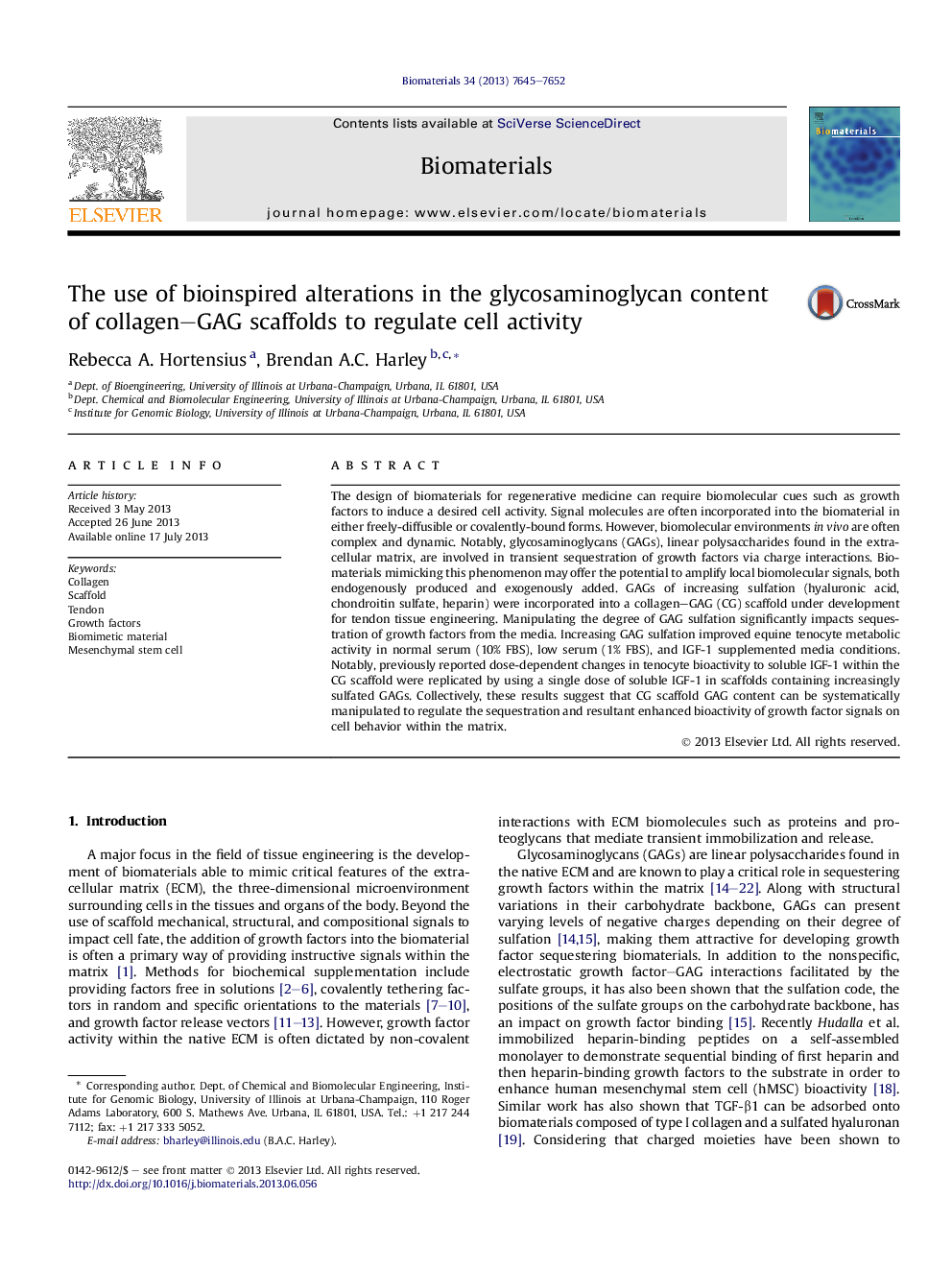| کد مقاله | کد نشریه | سال انتشار | مقاله انگلیسی | نسخه تمام متن |
|---|---|---|---|---|
| 5972 | 452 | 2013 | 8 صفحه PDF | دانلود رایگان |

The design of biomaterials for regenerative medicine can require biomolecular cues such as growth factors to induce a desired cell activity. Signal molecules are often incorporated into the biomaterial in either freely-diffusible or covalently-bound forms. However, biomolecular environments in vivo are often complex and dynamic. Notably, glycosaminoglycans (GAGs), linear polysaccharides found in the extracellular matrix, are involved in transient sequestration of growth factors via charge interactions. Biomaterials mimicking this phenomenon may offer the potential to amplify local biomolecular signals, both endogenously produced and exogenously added. GAGs of increasing sulfation (hyaluronic acid, chondroitin sulfate, heparin) were incorporated into a collagen–GAG (CG) scaffold under development for tendon tissue engineering. Manipulating the degree of GAG sulfation significantly impacts sequestration of growth factors from the media. Increasing GAG sulfation improved equine tenocyte metabolic activity in normal serum (10% FBS), low serum (1% FBS), and IGF-1 supplemented media conditions. Notably, previously reported dose-dependent changes in tenocyte bioactivity to soluble IGF-1 within the CG scaffold were replicated by using a single dose of soluble IGF-1 in scaffolds containing increasingly sulfated GAGs. Collectively, these results suggest that CG scaffold GAG content can be systematically manipulated to regulate the sequestration and resultant enhanced bioactivity of growth factor signals on cell behavior within the matrix.
Journal: Biomaterials - Volume 34, Issue 31, October 2013, Pages 7645–7652